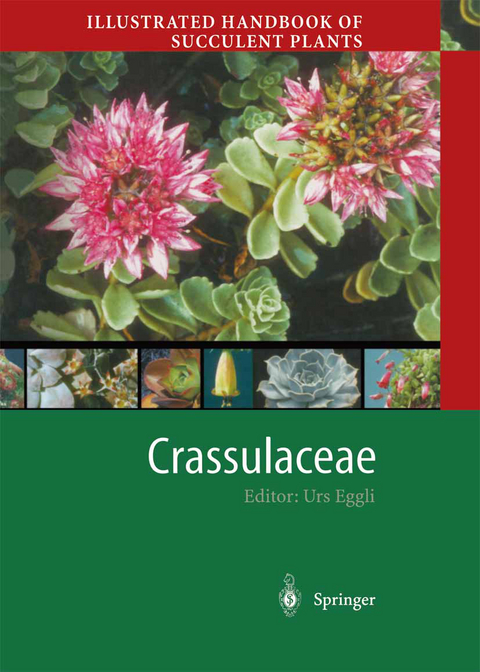
Illustrated Handbook of Succulent Plants: Crassulaceae
Springer Berlin (Verlag)
978-3-642-62629-6 (ISBN)
Content.- What is a Succulent?.- How to Use This Handbook.- Scope of Information Presented.- Crassulaceae.- Adromischus (28/9).- Aeonium (36/6).- Afrovivella (1/0).- Aichryson (14/0).- Cotyledon (10/5).- Crassula (195/88).- xCremnadia.- xCremneria (1/0).- x Cremnopetalum.- Cremnophila (2/0).- Cremnosedum.- xCremsonella.- xDudleveria.- Dudleya (47/20).- Echeveria (139/28).- xGrapsonella.- xGraptoladia.- Graptopetalum (16/2).- xGraptophytum.- xGraptosedum.- xGraptoveria.- Hylotelephium (27/17).- Hypagophytum (11/0).- Kalanchoe (144/11).- xLenaptopetalum.- Lenophyllum (7/0).- xLenophytum.- xLenoveria.- Meterostachys (11/0).- Monanthes (9/1).- Orostachys (12/4).- xPachyladia.- Pachyphytum (15/0).- xPachysedum.- xPachyveria.- Perrierosedum (1/0).- Phedimus (18/0).- Pistorinia (3/0).- Prometheum (8/1).- Pseudosedum (12/1).- Rhodiola (58/15).- Rosularia (17/9).- xSedadia.- Sedella (3/0).- xSedeveria.- Sedum (428/69).- Sempervivum (63/16).- Sinocrassula (7/7).- Thompsonella (6/0).- xThompsophytum.- xThompsosedum.- xThompsoveria.- Tylecodon (46/4).- Umbilicus (14/1).- Villadia (21/1).- xVilleveria.- References.- Taxonomic Cross-Reference Index.
| Erscheint lt. Verlag | 5.11.2012 |
|---|---|
| Reihe/Serie | Illustrated Handbook of Succulent Plants |
| Zusatzinfo | XIII, 506 p. |
| Verlagsort | Berlin |
| Sprache | englisch |
| Maße | 193 x 270 mm |
| Gewicht | 1121 g |
| Themenwelt | Naturwissenschaften ► Biologie ► Botanik |
| Naturwissenschaften ► Biologie ► Evolution | |
| Schlagworte | crassula • crassulaceae • echeveria • plants • sedum • sempervivum • stonecrop • succulents • systematic botany • Taxonomy |
| ISBN-10 | 3-642-62629-7 / 3642626297 |
| ISBN-13 | 978-3-642-62629-6 / 9783642626296 |
| Zustand | Neuware |
| Haben Sie eine Frage zum Produkt? |
aus dem Bereich


